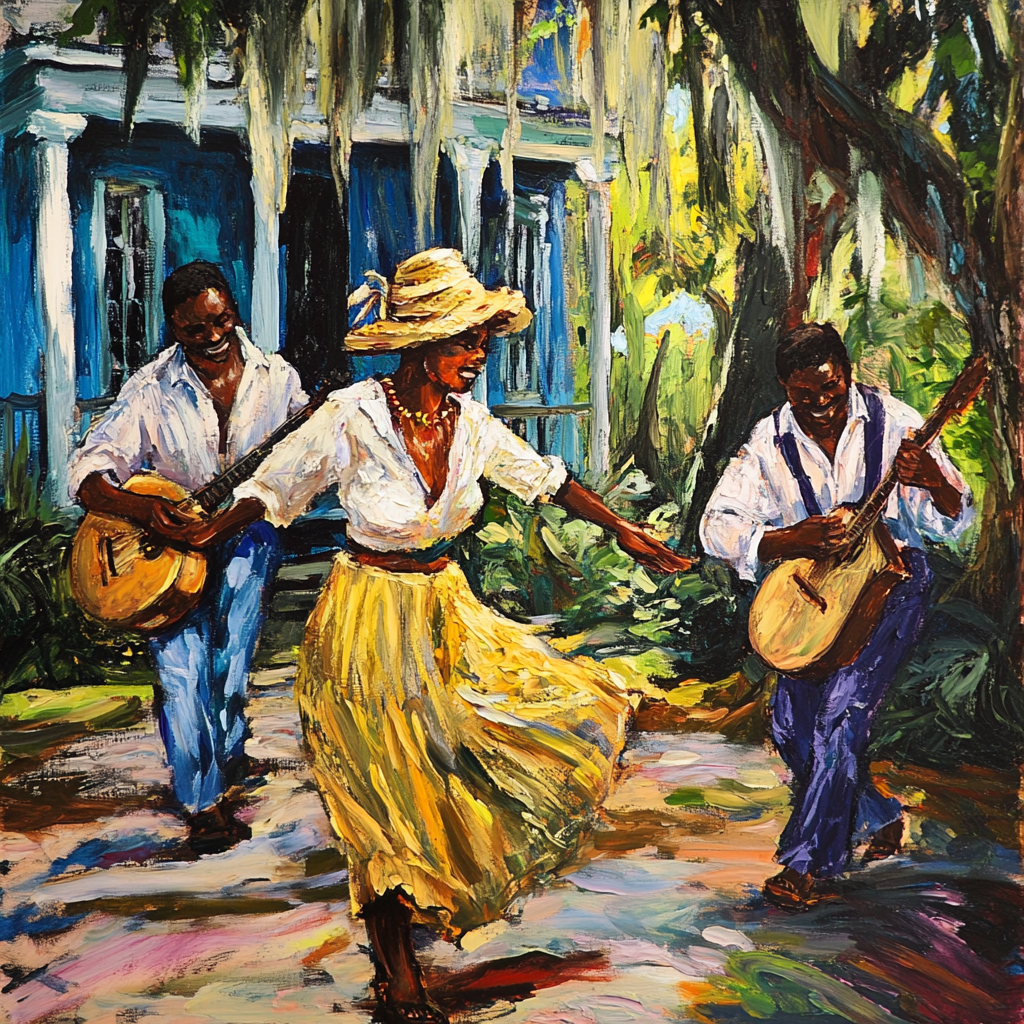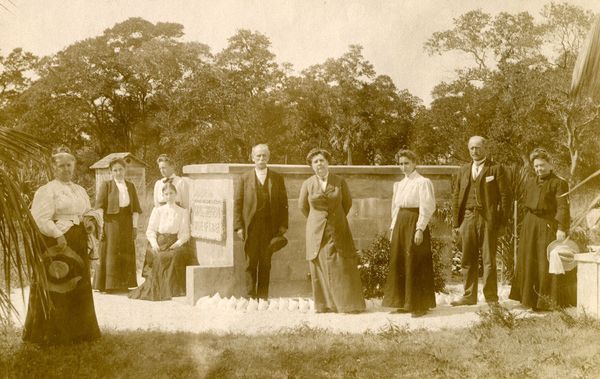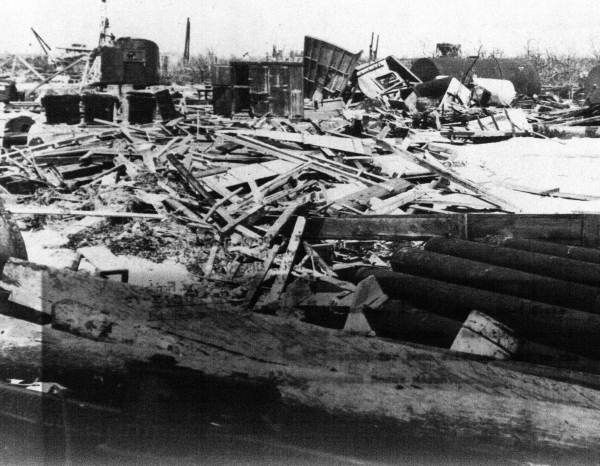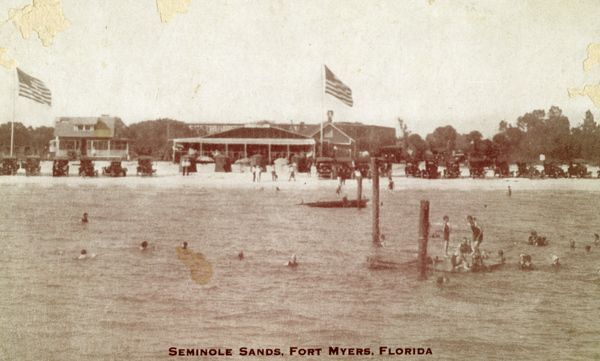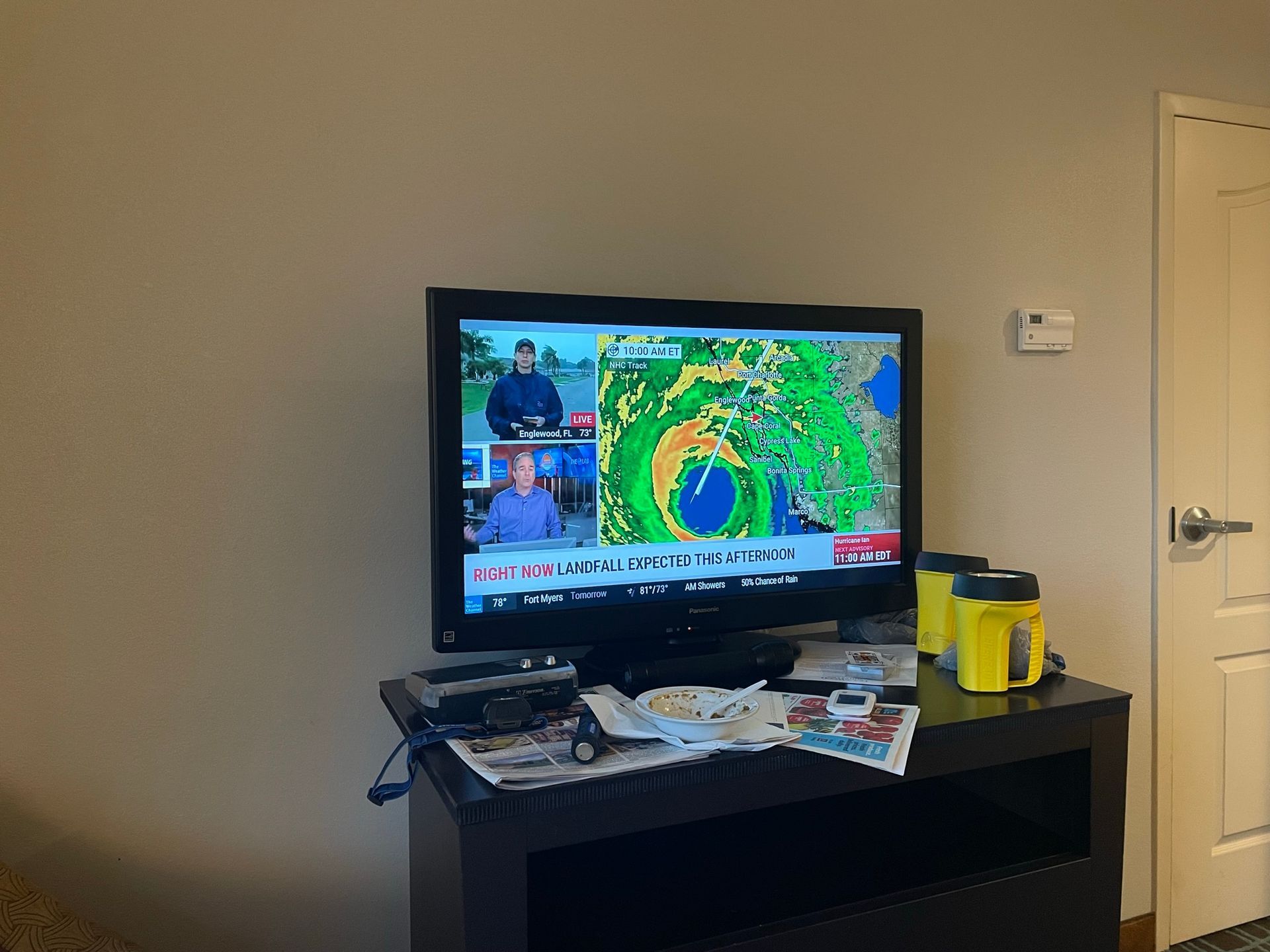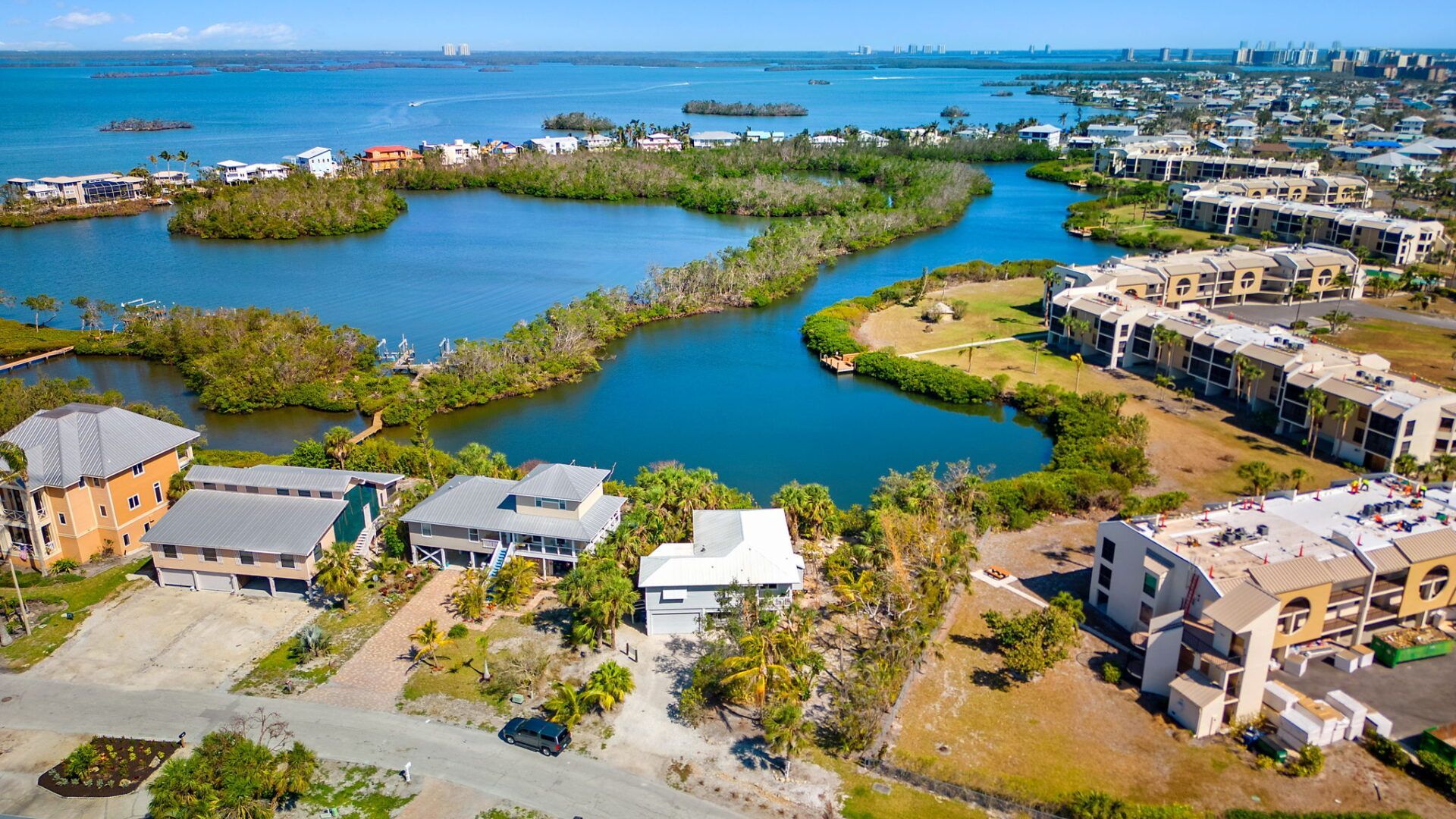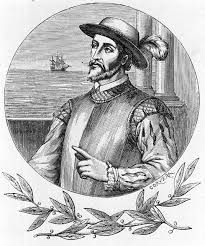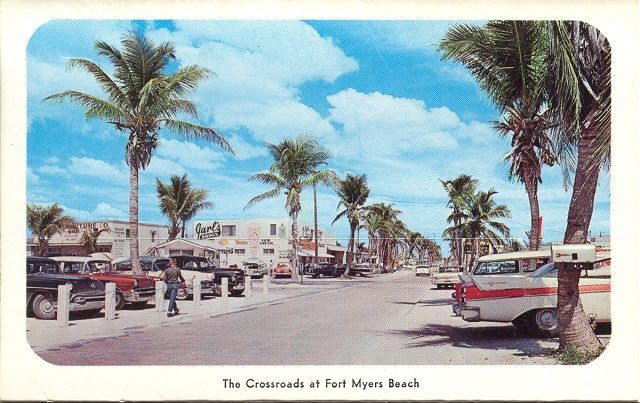Who Was WP Franklin?
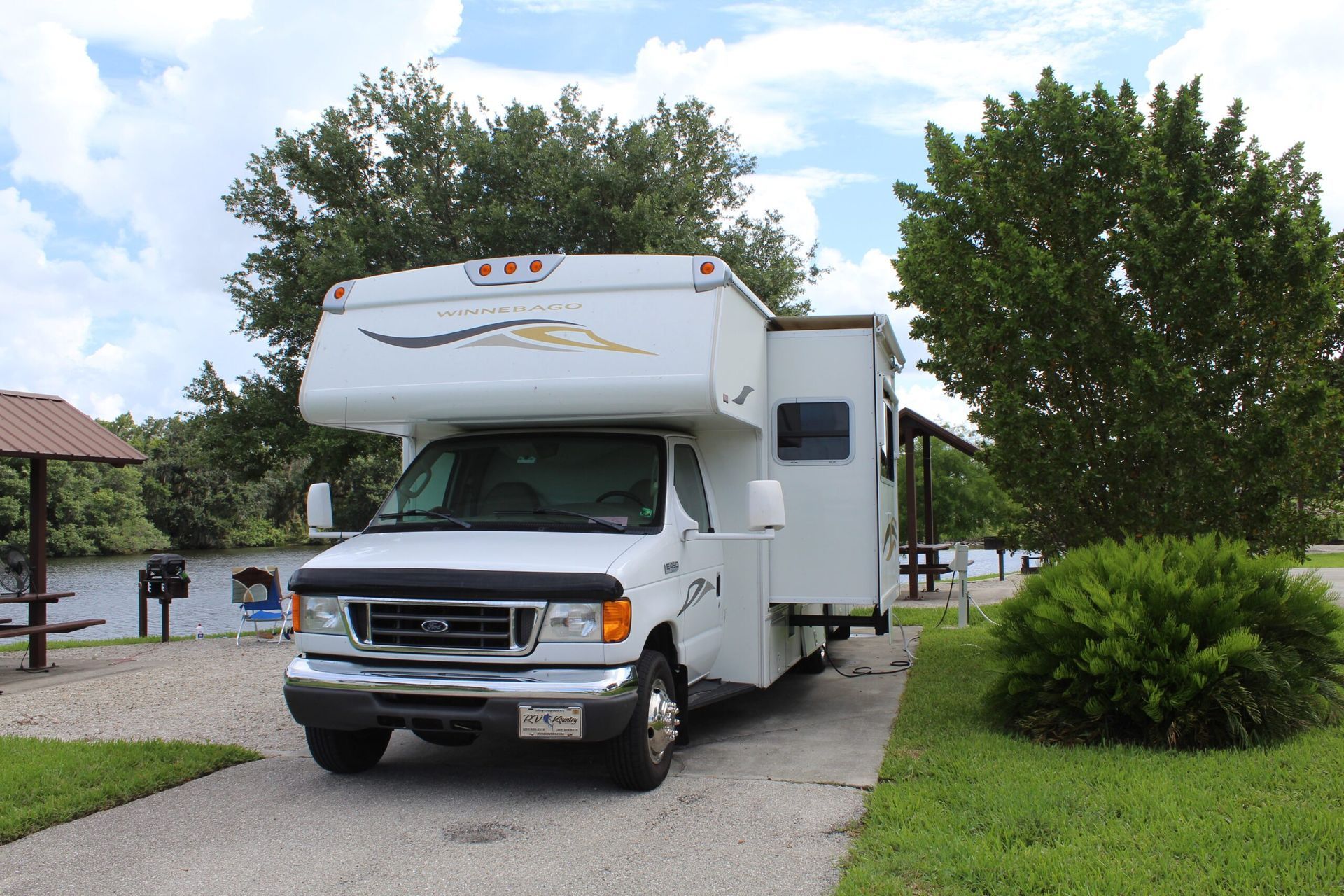
This is our campsite at the WP Franklin Campground.
Recently, my husband and I took our motor home to the WP Franklin campground. Located in Olga, the campground has 29 RV sites and 8 boat sites with 50 amp electric and water hookups. There is a boat ramp and a fishing pier which makes access to the river easy if you bring a boat.
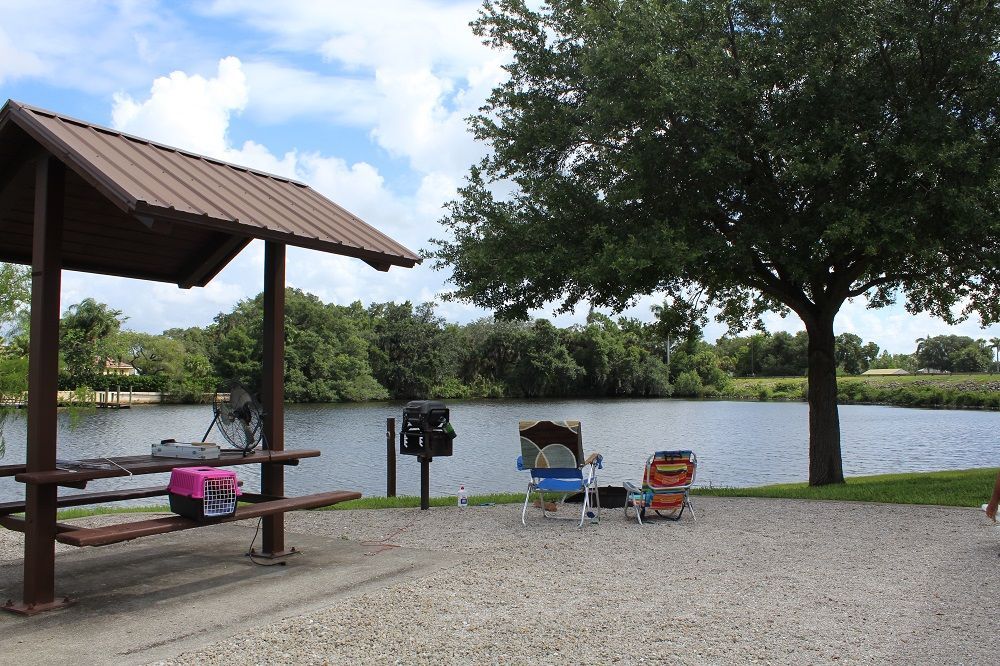
The view was nice and we could tie the boat up to the post.
The campground is surrounded by the Caloosahatchee River with most sites located directly on the water. The water on the east side of the locks is fresh, while the water on the west side is salt. Fishing for both is a popular pastime with a nice fishing pier going out by the locks.
We arrived on a Friday evening after the office had closed. We were late because when we plugged WP Franklin Locks Recreation area into the GPS we were directed to the Recreation Area on the south side of the river. This is a day use only area which is directly across from the camping area.
Once we figured out we were in the wrong place, we punched in the correct address for the campground, and about 20 minutes later, we were at the correct location.

The fishing pier at the locks was a popular place to watch the boats and catch a few.
When we first arrived, we had no idea where we were supposed to go. We couldn’t find any camp hosts to help us out, so we just drove aimlessly around the park a couple of times until we found the volunteers on duty in the evening. We looked over our reservation receipt many times hoping to locate a site number on the reservation. We later found out that the site number is the first number on the confirmation email. This would have been nice to know starting out.
The camp hosts, however, were most helpful. They directed us to our site and showed us where we could park the boat and the boat trailer. Our site was on a waterway that led out to the saltwater side of the river. There was a post where we could tie the boat once we put it in the water and crossed the locks.
The park itself is one of the most nicest that we have ever camped in, and we have been to quite a few RV parks in the 40 plus years that we have been RVing. We spent the day exploring the east side of the river taking a boat ride up past the Alva bridge.
WP Franklin
Naturally, my curiosity got the better of me, and I wanted to know more about WP Franklin. Who was he and why is the lock/dam named after him? It didn’t take long to learn more about this man who was a major player in Fort Myers history.
Walter Prospect Franklin was born in South Boston, Virginia and graduated from Ebon College in North Carolina. Franklin came to Florida in 1900 and worked in the sawmill industry. He came to Fort Myer for the first time in 1904 when he was selling sawmill parts. Nine years later he returned to run Franklin Hardware Company in Fort Myers. A civic- minded individual, Franklin became president of the organization known as the “Gulf, Okeechobee, and Atlantic Waterway Association.” The purpose of this group was to lobby for federal funding for flood control in the Lake O watershed.

Franklin Arms Hotel
In 1918, Franklin bought The Hill House from Flossy Hill in downtown Fort Myers. It became the Franklin Arms Hotel. He expanded it five years later with an 84-room addition which was eight stories high becoming the city’s first high rise. Franklin was mayor of Fort Myers in 1917 and 1918, and, according to FM historian Karl Grismer, he was, “a leading factor in the completion of the cross-state waterway.” In his History of Fort Myers, Grismer wrote it was “largely through Franklin’s efforts that the necessary surveys were made and the project started in 1932.” The Okeechobee Waterway officially opened in 1937 connecting Fort Myers to Stuart.
After the 1926 and 1928 hurricanes, Franklin went to Washington to lobby for 18 million in funds to help control the floods that killed thousands of people during the 1928 storm. Franklin managed to get money and support to build the Hoover Dike around Lake 0 in 1930.
Lake O Waterway
After learning all of this about Franklin, I felt obligated to learn more about the Lake O waterway that he was so instrumental in promoting. The Lake O waterway runs 154 miles from the Atlanta Ocean in Stuart to the Gulf of Mexico at Punta Rassa. The waterway is bordered on the west by Caloosahatchee River and on the east by the St. Lucie Canal.
There are five navigation locks and dams along the waterway. The Franklin locks was designed to control the flow of water from Lake O to the river. Tides and releases of water from the lake cause the salinity levels to change in the estuary and this affects the health of animals and plants who depend on this environment for survival.
Now that I knew about waterway and the purpose of the locks, I ended up going down a rabbit hole researching the history of the river.
The River Runs Through It
Many years ago, before man began interfering in our natural waterways, the Caloosahatchee River originated in a basin located near Fort Thompson, two miles from LaBelle. This was known as the Lake Flint basin.
The river contained 102 bends in the 64 miles between Beautiful Island and Lake O which made navigation difficult. The water would rise 4 to 10 feet above the river at certain times of the year creating a .09 mile long rapids that flowed over the banks of the river creating marshes and connecting a series of lakes. During the dry season, the riverbed would dry up and during the wet season, the water level would rise up to 17 feet above the bank of the river.
In the 1800s officials realized that developing this part of Florida would be difficult unless they could find a way to control the flooding. Hamilton Disston, in 1887, brought in dredges to straighten four of the worst bends in the river west of Fort Thompson. If the river were straightened, barges could travel upstream. They built dams every few miles in hopes of controlling the flow of water. The intent of this dredging was not really to help navigation. Rather, it was designed to drain the valley and confine the river to its banks.
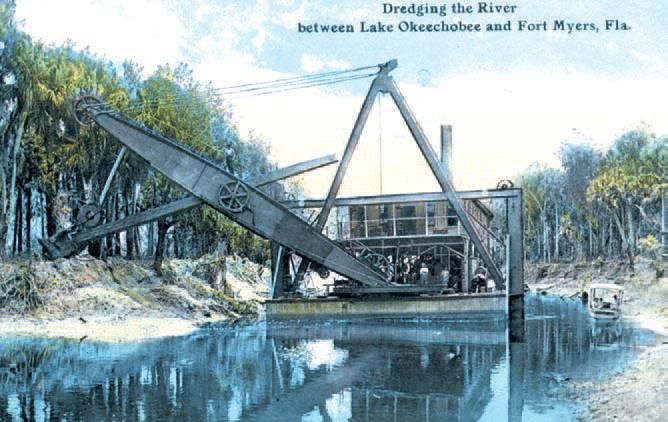
Eventually the dredging would open up a 300 mile water route from the gulf to central Florida by way of the Caloosahatchee and Kississimmee Rivers. Disstin never finished the project and the dredged channel between Fort Thompson and Lake O was not maintained, so it did not take long for shoals to appear. In addition, during the wet season, water would rush unrestricted down the channel causing flooding.
In 1913, drainage in Central Florida lowered the water in Lake O so much that navigation was impossible. By 1914, in LaBelle, the water level in the river was only 1.5 feet. At this time, the state dredged a channel from Lake O to LaBelle that was five feet deep and 40 feet wide.
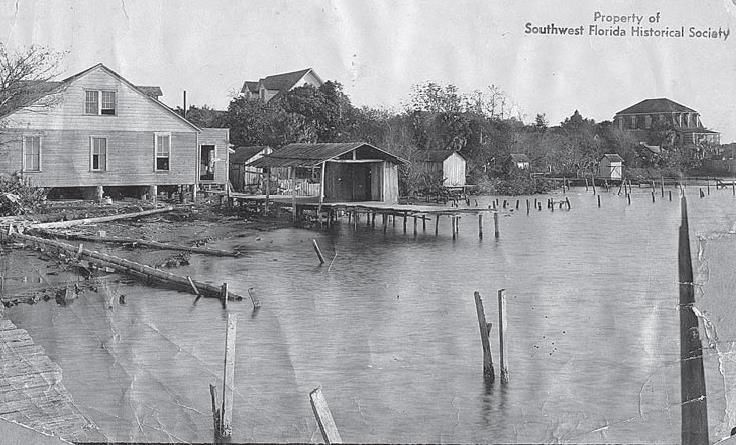
This is what the river looked like back in the 1800s.
Floods in 1922, 1923, 1926, 1928 caused Feds to authorize the Army Corp of Engineers to survey the area a improve flood protection and navigation.
In 1930, river dredging continued along with the building of drainage canals, locks, and pump stations. In this way, the river was changed from a naturally meandering waterway to a vertical, flood-controlled waterway.
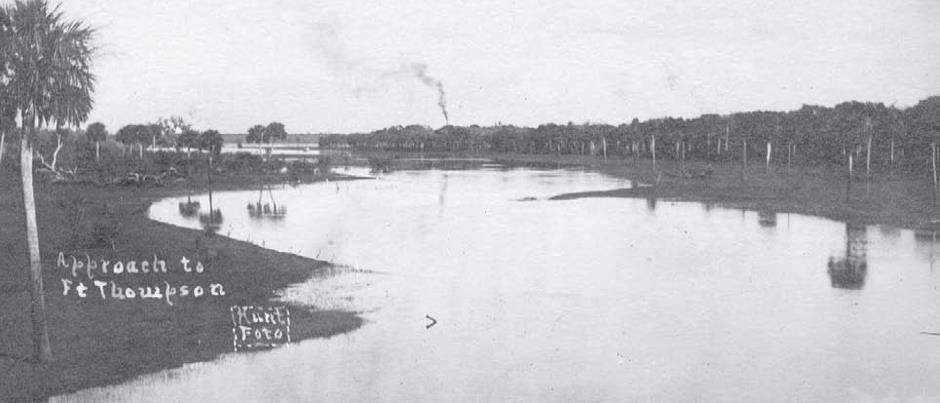
Before all of the dredging and straightening, the river looked like this.
In the 1950s the channel was 8 feet deep and 250 feet wide. A new lock and dam was constructed at Olga in 1962 and dedicated to WP Franklin in 1969. Today, the locks artificially set the eastern limits of the gulf’s tidal influence on the esturary. Lake Flirt is gone.
WP Franklin lock is the western line of protection limiting storm surge from the gulf and salt water intrusion into the river’s estuary.
